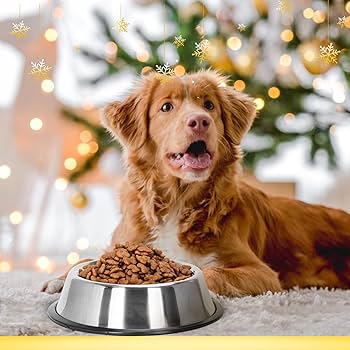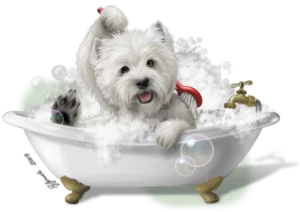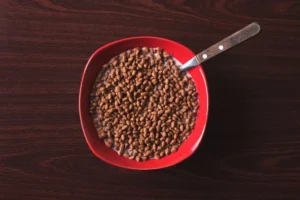Stainless Steel Dog Bowl

Stainless Steel Dog Bowl:- Stainless steel dog bowls are renowned for their durability and are a popular choice among pet owners and veterinarians. These bowls are dishwasher safe, making them easy to clean, and often come with a non-slip bottom to prevent spills. They offer a practical, cost-effective, and long-lasting solution for feeding your dog.
However, it’s important to note that not all stainless steel bowls are equal. There are various grades of stainless steel, each with its own set of advantages and disadvantages. Some grades are more suited for food-related applications than others, and it can be challenging for an average consumer to distinguish between them. To ensure you’re getting a high-quality product, it’s best to purchase stainless steel dog bowls from reputable manufacturers.

Stainless Steel Dog Bowl is composed of iron, carbon, and alloying elements like chromium and nickel, which provide resistance to corrosion. This makes stainless steel dog bowls not only durable but also hygienic, making them a top choice for your furry friend’s feeding needs.
Toxic Impact
Stainless steel is a non-toxic material, but ensure you choose ‘food grade’ stainless steel, specifically the 200 and 300 series.
Allergies
The likelihood of allergic reactions to stainless steel is minimal. However, some dogs may be sensitive to nickel or chromium, particularly hairless breeds. Symptoms of such allergies can include skin lesions, irritation, redness, fur loss, and changes in skin pigmentation.
Safety
Stainless steel is highly resistant to chewing, scratching, cracking, and shattering.
Hygiene
Stainless steel is exceptionally hygienic. All food-grade stainless steel bowls are dishwasher safe and resistant to scratching, cracking, corrosion, and rust. This prevents bacteria and mold from growing on the surface.
Durability
Stainless steel is known for its high durability and long-lasting quality.
Affordability
Prices can vary based on the type of bowl. Basic single-layer stainless steel bowls are generally affordable, while double-insulated, non-slip bowls tend to be more expensive.
Weight
The weight of stainless steel bowls depends on their design and intended use. Basic single-layer bowls are lightweight and ideal for travel or less vigorous eaters. Double-insulated bowls are heavier and typically feature a non-slip ring, making them better suited for vigorous eaters and dogs that tend to flip their bowls.
Variety and Aesthetics: Stainless steel bowls offer fewer color and design choices, but there are still plenty of appealing options.

Overall, stainless steel bowls are highly rated for their non-toxicity, safety, hygiene, and durability. If you choose a stainless steel bowl, ensure it is food-grade quality (200 or 300 series) and dishwasher safe. Be cautious with brands that don’t specify the stainless steel grade or are labeled as ‘hand wash only’ or ‘for pet use only.’
Benefits of Using Stainless Steel Dog Bowls
Stainless steel dog bowl are a top choice for many pet owners due to their numerous advantages:
– Durability: These bowls are built to withstand dents, bites, and rough handling, making them a long-lasting option.
– Rust Resistance: They are resistant to rust, ensuring they remain in good condition whether used indoors or outdoors.
– Easy to Clean: Dishwasher safe and simple to sanitize, stainless steel bowls help prevent bacterial growth and keep your pet’s feeding area hygienic.
– Non-Porous Surface: The smooth surface doesn’t trap food or harbor bacteria, contributing to a healthier feeding environment.
– Lightweight: Designed for easy portability, they are convenient to move around.
– Resistant to Chipping and Cracking: Unlike some materials, stainless steel bowls won’t chip or crack with normal use.
– Variety of Sizes: Available in multiple sizes, they cater to dogs of all breeds and sizes.
– Cost-Effective: Generally less expensive than ceramic alternatives, they offer great value for their durability.
With their easy maintenance and robust nature, stainless steel bowls are perfect for busy households with active pets. They are suitable for any breed, from small Chihuahuas to large Mastiffs, and handle both wet and dry food without absorbing odors or stains.

Drawbacks of Stainless Steel Dog Bowls
While stainless steel dog bowls have many advantages, they aren’t without their downsides. Depending on your specific needs, these bowls may not always be the ideal choice.
Here are a few considerations to keep in mind before opting for stainless steel dog bowls:
1. Susceptibility to Rust
Though stainless steel is generally rust-resistant, it can still rust over time. The likelihood of rust developing depends largely on the quality of the material used. High-quality stainless steel is far less prone to rust compared to lower-quality varieties. So, if you’re considering this type of bowl, prioritize a bowl made from premium-grade stainless steel to avoid rust issues down the line.
2. Requires a Non-Slip Base or Mat
Unlike plastic or silicone bowls, stainless steel is slick and lightweight, meaning these bowls can slide around on the floor while your dog eats or drinks. To prevent this, you’ll need either a non-slip bowl with a rubber or silicone base or a separate non-slip mat to keep it stable. Without this, you might find yourself chasing after a moving bowl!
While stainless steel bowls are durable and hygienic, they do come with a few practical concerns. By addressing these, you can ensure they work well for your dog and home environment.
Metal Bowls Can Be Noisier
Stainless steel bowls can be a bit noisier compared to bowls made from other materials. While this might seem like a minor issue, it could influence your decision if you’re choosing between options.
Higher Cost
High-quality stainless steel bowls tend to be pricier than budget plastic alternatives. This difference in cost might be a consideration if you’re on a tight budget.
Also Read:-




